we hinted previously that there are a few reasons to come to broome. the thing that initially attracted people – and that continues to this day – were the pearls. initially the pearls were harvested by free divers. in the 19th century the industry switched to the deep sea diving suits, the kind that’s made of rubberised cotton and with the somewhat awkward copper diving helmet and the massive boots. divers submerged from relatively small boats and the communication between divers working in the murky deep and the crew back on deck was complicated to say the least. divers were often the casualties although on some occasions entire fleets were lost when they were caught out by tropical storms.
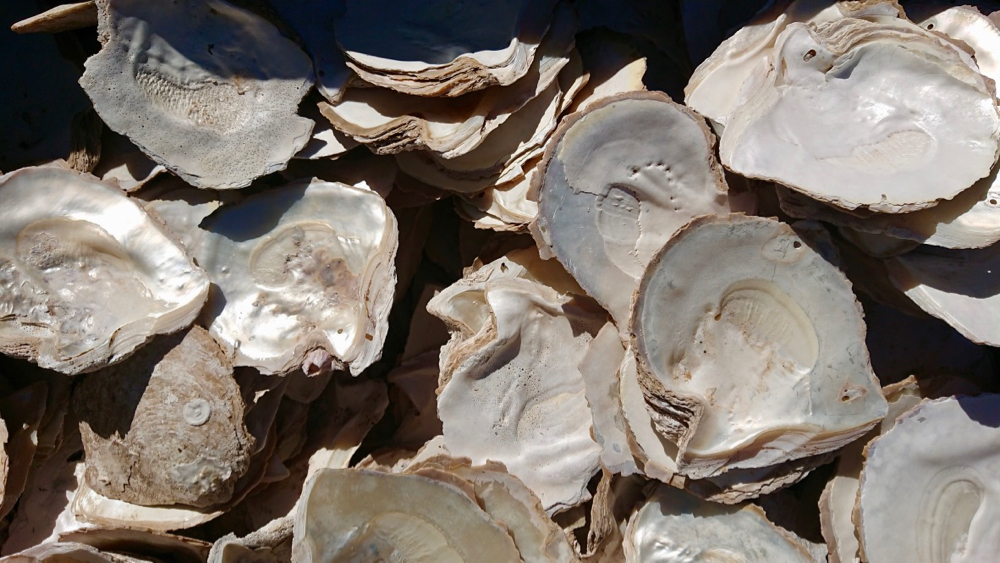
in the 1970ies these suits were replaced by modern scuba diving equipment. broome’s main streets are still lined with pearls shops – good for nat and kris (although they didn’t buy anything).
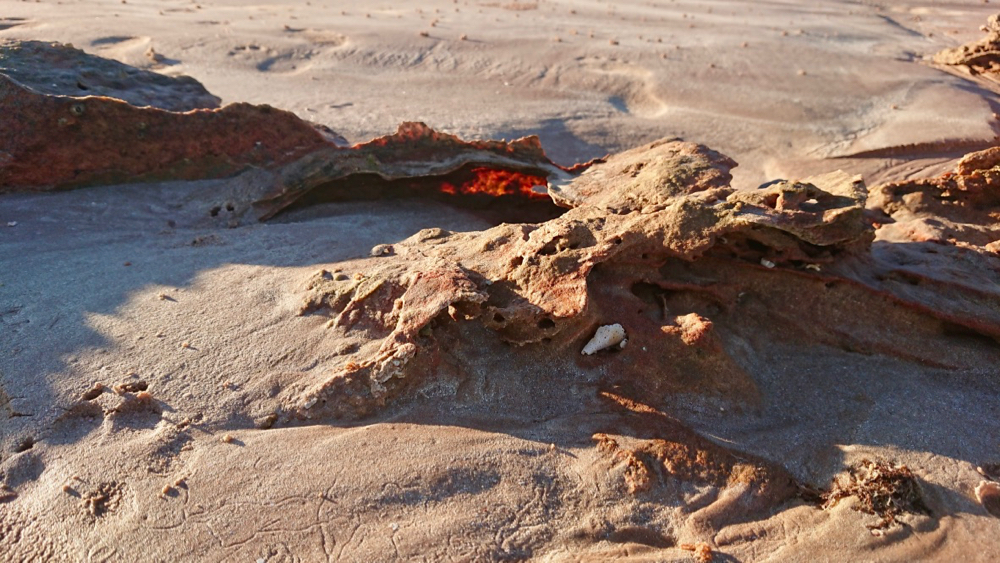
the other thing broome is famous for are dino footprints. about 160 million years ago, when australia was still part of the supercontinent of gondwana, dinos left footprints on what was then a loamy plain.
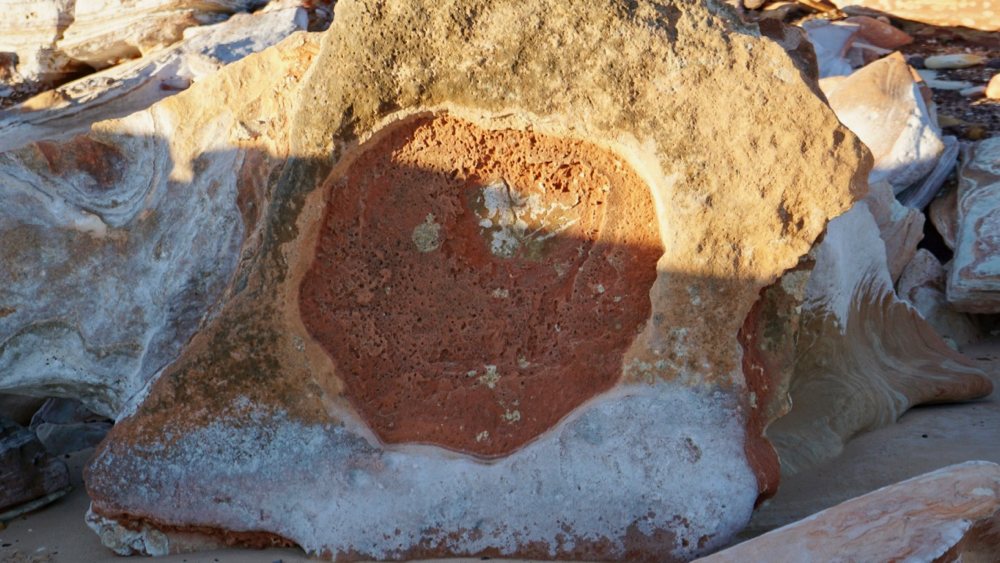
over time the footprints were covered with sediments and solidified. today the prints can be seen in the sandstone, although often it is not the footprint surface that we see. we see what was several layers under ground.
the photos above and below are sauropod footprints, i.e. from massive long-necked plant eaters.
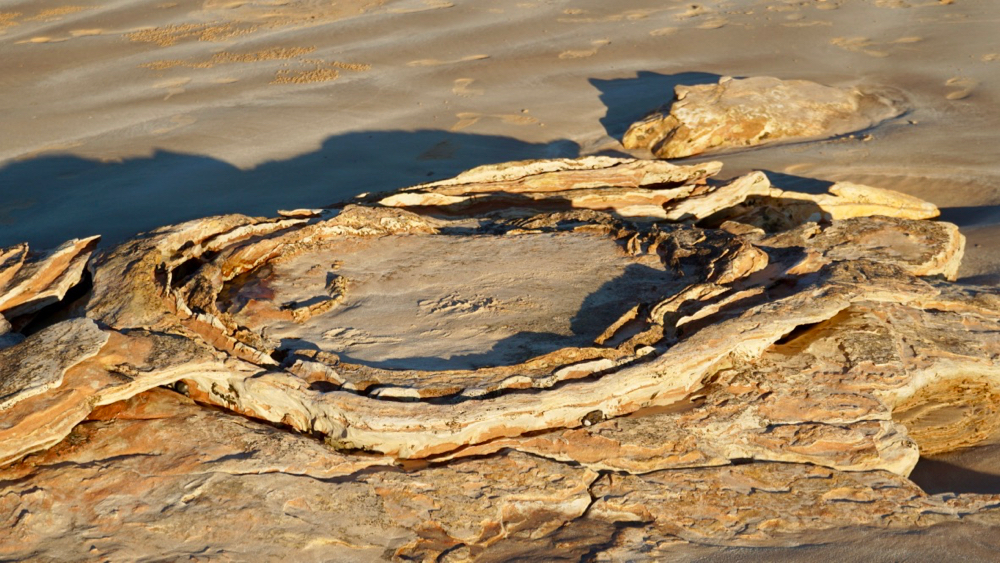
the entire coast from broome to the north is covered in these footprints which were left by several different types of dinosaurs. only a few of them are generally visible, many are covered by the ocean and are only visible at low tide – unless they are covered by sand.
interestingly there are no detailed maps of, or signs pointing to, the footprints. this appears to have several reasons. partly it is due to the fact that the prints, while made of stone, can easily be damaged or destroyed. especially when, and this has actually happened, someone tries to cut one up with an angle grinder to sell it. or when people try to use shovels to dig them out of the sand.
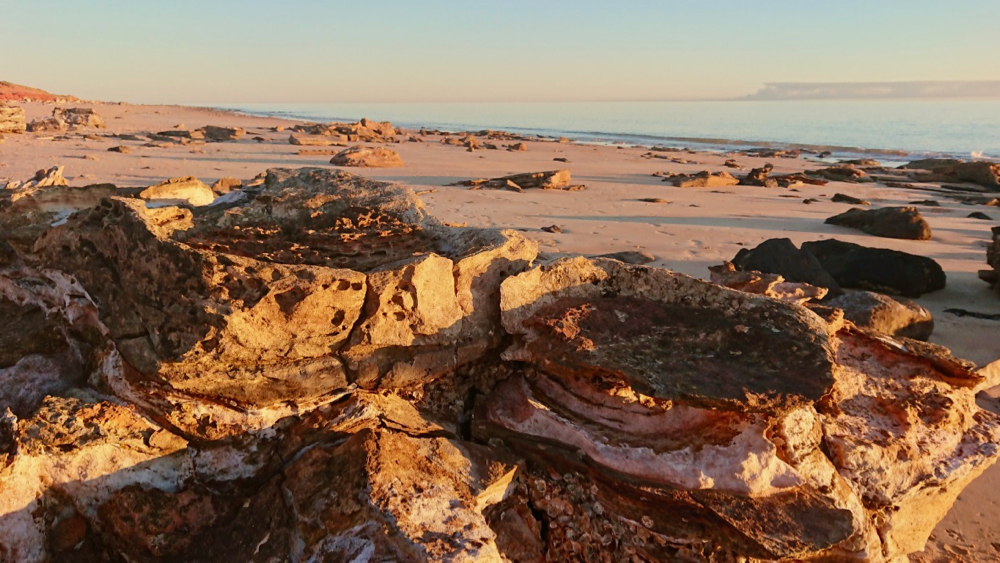
the tides here in broome are pretty extreme; the maximum difference is about 10 meters, therefore some of the places are only accessible on a few occasions in spring, when the tides are especially low. we were lucky to meet a few locals on the beach who pointed us in the right direction. as it turned out one of them is part of the dinosaur coast management group who has found many footprints herself.
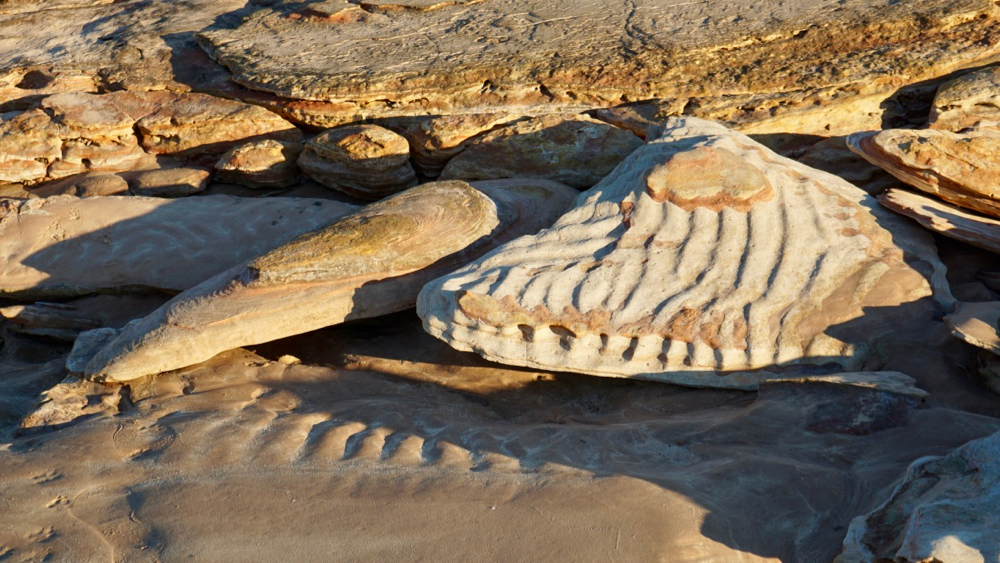
some limestone bears the signs of ancient oceans. the ripples of shallow water over sand is still visible.
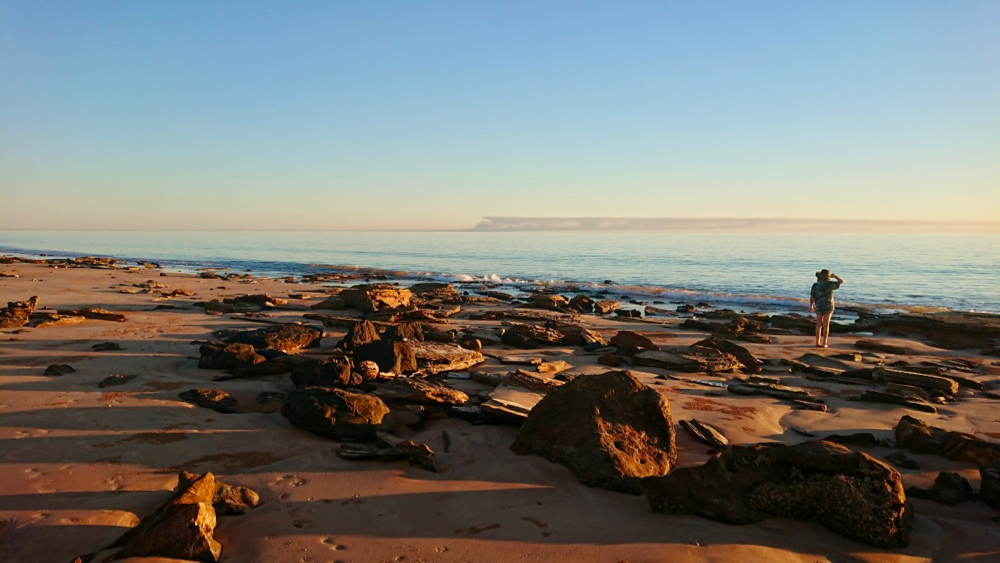
sunset on the beach. the plume in the background is caused by backburning.
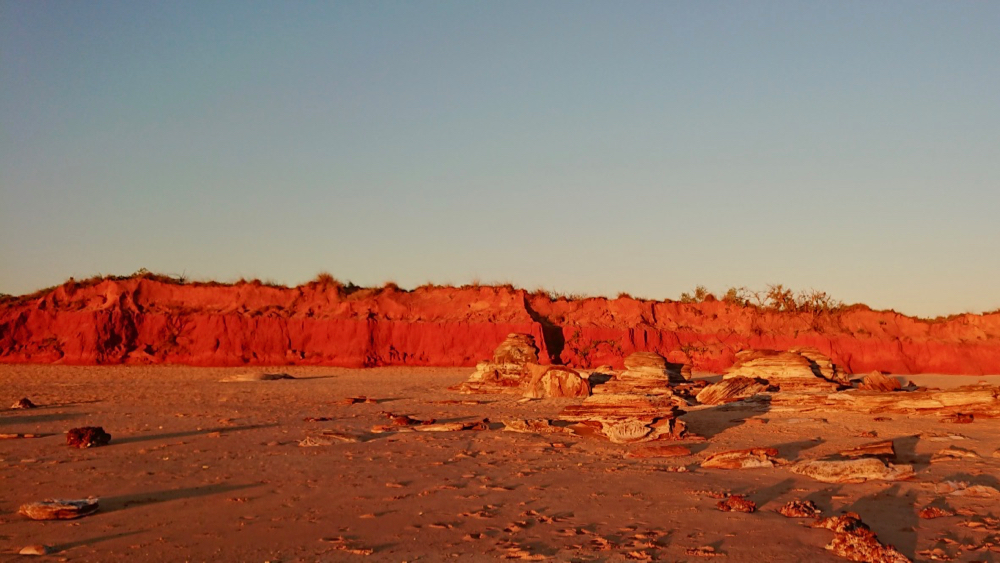
the famous red cliffs of broome. the red cliffs, the sand and the ancient limestone slabs make this an amazing place for a sunset walk.
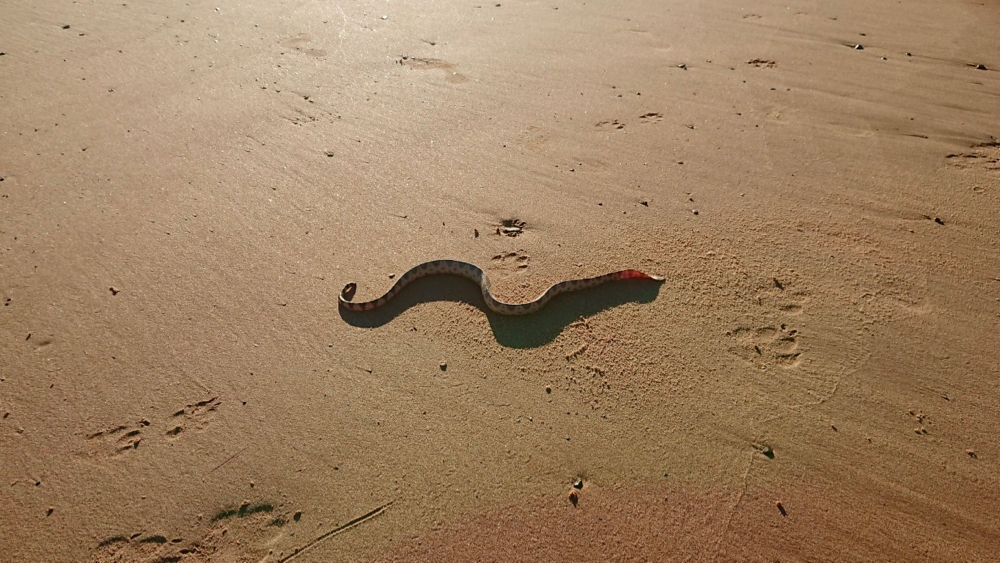
we also found this little guy on the beach, a sea snake. we don’t think he was in good shape, he hardly moved. natalie still tried to save him and carried him back to the water. we hope he’ll be ok.
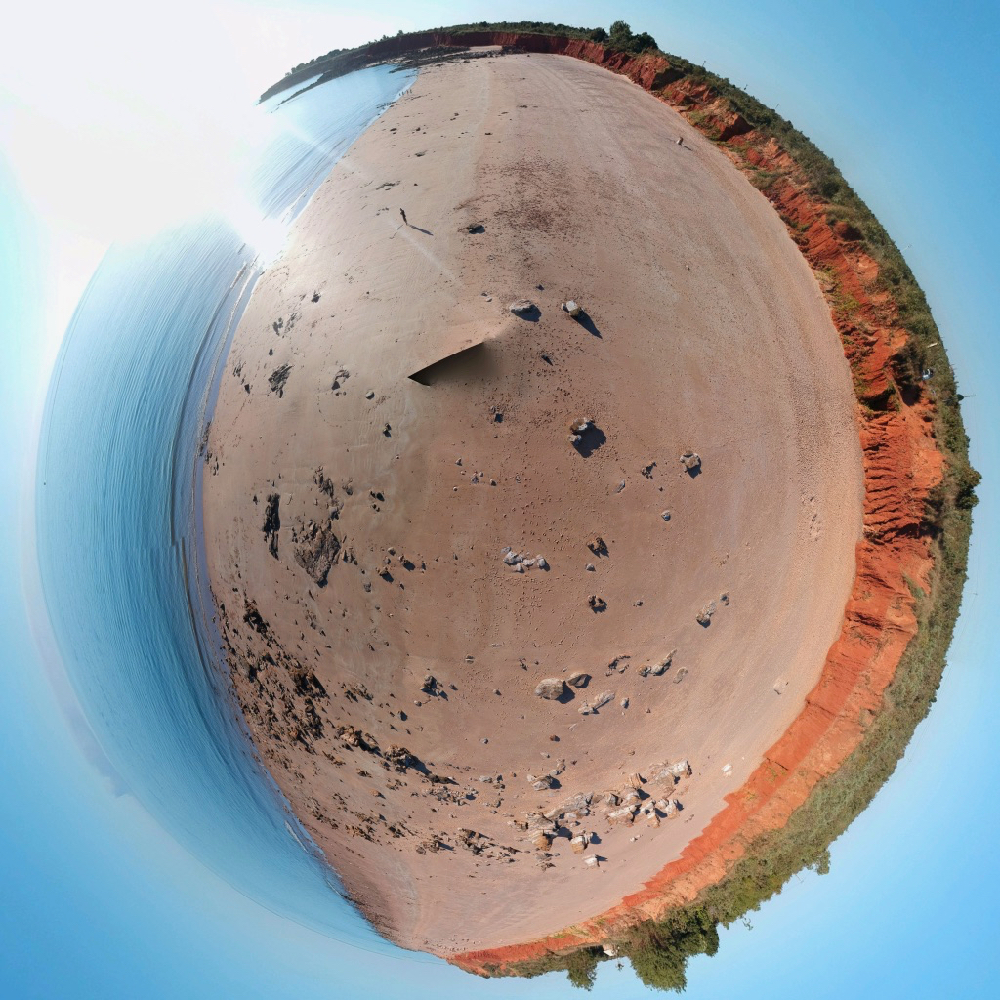
and because they are so cute here is another tiny planet. zippy’s been hard at work.
here is some footage of dino footprints, in this case sauropods i.e. the huge plant eaters with the long necks. watch out for the round shapes.

i now uploaded the video with the dino footprints. i hope you’ll be able to spot them.